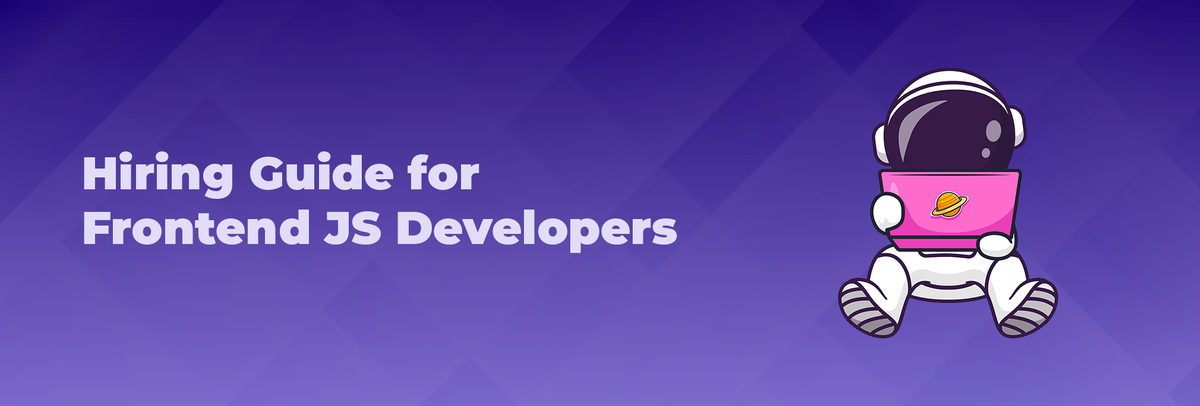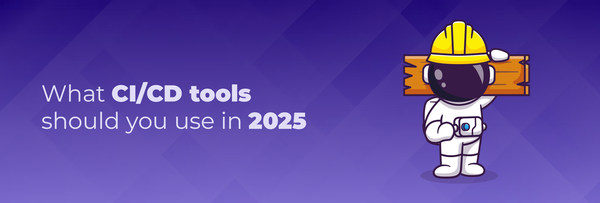Hiring Guide for Front-end JS Developers

Navigating the complexities of front-end technology requires a strategic approach when hiring someone proficient in JavaScript and related technologies.
This comprehensive recruitment guide is designed to streamline the hiring process for front-end JS developers, ensuring you attract top talent in a competitive market.
Whether you’re a startup or an established enterprise, understanding the nuances of Java front-end technologies and other crucial skills is essential.
From evaluating technical expertise to assessing cultural fit, our guide covers all aspects to help you make informed decisions and build a robust development team.
Explore our expert tips and strategies to enhance your recruitment efforts today.
What is Front-End Development?
Front-end development focuses on crafting user experiences, a crucial aspect considering that 88% of online consumers are less likely to return to a site after a bad experience.
Front-end developers create the visible parts of applications that users interact with, aiming for an elegant, user-friendly, fast, and secure interface.
Key design elements include text colors and styles, images, graphs, buttons, and overall color schemes.
These enhance visual appeal and usability. Interactive features like sliders, pop-up forms, and custom maps are also integral.
Navigation menus are crucial for guiding users, making intuitive design a vital skill.
Essential skills for front-end developers include HTML, CSS, JavaScript, and knowledge of CSS preprocessors like Sass and Less.
Understanding server-side CSS processing and proficiency in TypeScript, a JavaScript superset with static typing, are also beneficial.
Front-end applications, or the "client side," differ from the backend, which handles behind-the-scenes operations.
APIs facilitate communication between the two, ensuring a seamless user experience.
The field’s growing complexity demands specialized expertise due to evolving design and technology trends which is why you might want to hire a front end JS developer for your business.
Let’s see how you can do it efficiently.
Fun Fact: For every dollar invested in user experience (UX), companies see a return of $100, yielding an impressive 9,900% ROI.
Skills to Look for in a Front-End Developer
Hiring a proficient front-end developer requires balancing technical expertise with essential soft skills for seamless team collaboration.
Here's a breakdown of the key competencies to look for in a front-end developer:
Table 1 provides a succinct overview of the essential technical skills needed for a JavaScript front-end developer.
Table 2 presents an organized view of the essential soft skills required for a JavaScript front-end developer.
5 Crucial Steps to Hire a Front-End JS Developer
- Define Your Requirements
Start by clearly outlining the specific technical skills, experience, and qualifications needed for your project.
Identify whether you need proficiency in particular frameworks like ReactJS or AngularJS, expertise in design tools such as Figma or Adobe Illustrator, or experience in creating responsive designs and ensuring cross-browser compatibility.
Consider the scope and scale of your project to determine if you need a mid-level developer or a full-stack developer with back-end knowledge as well.
- Create a Comprehensive Job Description
Craft a detailed job description that goes beyond listing technical requirements. Include key responsibilities, day-to-day tasks, and the goals you aim to achieve with the hire.
Highlight both the essential technical skills (HTML, CSS, JavaScript, frameworks) and the desired soft skills (communication, teamwork, problem-solving).
Use this opportunity to showcase your company culture, values, and any unique benefits you offer, which can attract candidates who are not just skilled but also a good cultural fit.
- Screen and Shortlist Candidates
Begin by thoroughly evaluating resumes and portfolios to identify candidates who meet your technical criteria.
Look for evidence of their ability to build functional and visually appealing web applications.
Pay special attention to their past projects, particularly those that are similar to your requirements.
Use pre-screening questions or brief initial interviews to further narrow down the pool, focusing on both technical skills and relevant experience.
- Conduct Technical Interviews and Assessments
Organize in-depth technical interviews to assess the candidate's coding skills, problem-solving abilities, and familiarity with front-end technologies.
Include coding tests or practical assignments to evaluate their proficiency in writing clean, efficient code, debugging, and optimizing applications.
Use scenario-based questions to understand how they approach real-world challenges.
Additionally, consider pair programming sessions to observe their collaborative coding skills and ability to communicate technical concepts effectively.
- Evaluate Soft Skills and Cultural Fit
Conduct behavioral interviews to assess the candidate's soft skills. Use situational questions to evaluate their communication style, teamwork capabilities, and adaptability.
For instance, ask about a time they had to collaborate on a difficult project or how they handle tight deadlines and feedback.
Ensure they align with your company’s culture and values, as this alignment is crucial for fostering a collaborative work environment and long-term success.
Consider involving team members in the interview process to get a broader perspective on the candidate’s fit.
By following these steps, you can ensure a thorough and insightful hiring process, resulting in the selection of a front-end developer who not only excels technically but also integrates well within your team and contributes to your company's success.
Hire a Front-End JS Developer With Teamo
Unlock the potential of your business with Teamo's groundbreaking talent solution!
Our platform offers access to a league of extraordinary software developers meticulously selected from emerging markets, seamlessly integrated as remote powerhouses into your development team.
- Seamless Integration: Experience effortless integration with our remote developers, ensuring they become integral members of your team from day one.
- Fast and Affordable: Enjoy the benefits of fast onboarding and cost-effective solutions without compromising on quality or expertise.
- Extensively Vetted: Rest assured knowing that all our developers undergo rigorous vetting processes to ensure top-tier talent.
Features of Teamo's Talent Solution
Explore the array of features offered by Teamo's talent solution, designed to streamline your hiring process and empower your development team:
Table 3 - Features of Teamo’s Talent Solution
Ready to supercharge your development team? Experience the seamless integration, hassle-free operation, and crystal-clear insights Teamo offers.
Elevate your projects with top-tier talent onboarded in just 24 hours. Schedule your demo today.
FAQs
- Is ReactJS Front-end or Back-end?
ReactJS is a front-end library used for building user interfaces, primarily for single-page applications.
It allows developers to create reusable UI components and manage the view layer of web applications efficiently.
If you're hiring a front-end JS developer, proficiency in ReactJS is a highly desirable skill.
- Is Java Front-end or Back-end?
Java is typically used as a backend language in web development.
It is known for its robustness, scalability, and security features, making it ideal for server-side applications and enterprise-level software.
However, Java can also be used for front-end development in certain contexts, such as Java applets, but this is less common in modern web development compared to other front-end languages.
- What Are Front-end Languages Commonly Used in Web Development?
Front-end languages are crucial for creating the visual and interactive aspects of web applications.
Some of the most commonly used front-end languages include HTML, CSS, and JavaScript.
JavaScript frameworks and libraries like ReactJS, Angular, and Vue.js are also widely used in front-end web development to enhance functionality and user experience.
- Why Are Front-End Web Development Languages Important for Hiring?
Front-end web development languages, such as HTML, CSS, and JavaScript, are essential because they form the foundation of a website's appearance and behavior.
Proficiency in these languages ensures that a front-end JS developer can create engaging, responsive, and user-friendly interfaces.
When hiring, it's important to look for candidates who have strong skills in these areas to ensure your web applications are visually appealing and function smoothly across different devices and browsers.
By understanding the roles of various front-end and backend technologies, you can make informed decisions when hiring front-end JS developers for your projects.




